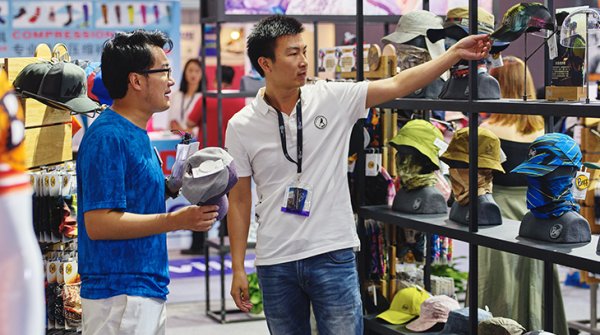
The same is true for sportswear manufacturers as for any other industry: China is the largest market in the world – and parts of it have yet to be developed. So Adidas, Nike, Puma, and other smaller companies are now working on achieving this, because “the sheer size of the Chinese market makes it interesting not only for large companies but also for smaller ones,” says Sascha Schmidt. “Furthermore, sports, and soccer in particular, have been consciously promoted by the Chinese government in recent years.”
Schmidt is the head of the Center for Sports and Management (CSM) at the WHU – Otto Beisheim School of Management in Düsseldorf. He has been studying the “future of sports” as one of his central research topics and published a study about China’s fascination with soccer called “Dancing with the Dragon.” China's president, Xi Jinping, would like to improve the health of the Chinese population. He is focusing on sports, among other things, to do so. And the government is working towards bringing the World Cup of Soccer to China for the first time by the year 2030 and is therefore supporting the sport.
Sports Business in China
But Schmidt believes that companies will have little chance of lasting success without foresight. China is a large market, but because of the many competitors, it will not be an easy one to conquer: “Simply having a few profiles on Chinese social media platforms doesn't make any sense,” says the economist. “Entering China's market must be something that has been well thought out, it requires the right strategy.”
But what is the right strategy in a country that, on first glance, is hard to penetrate from Central Europe or the US? A country whose Internet is regulated and whose social networks are called Weibo and Tencent instead of Facebook, Twitter, or WhatsApp. Schmidt has given this a great deal of thought. He has also closely followed the route taken by the FC Bayern München soccer club and discovered a few starting points.
“As opposed to the competition, the Munich club decided to approach the Chinese market with a “make” strategy. That means doing it yourself instead of letting others do it for you. They accomplished their market launch almost entirely on their own, only commissioning a few tasks to agencies. They used the strengths of their strategic partners to establish themselves in China.” Schmidt’s words make it apparent that the soccer club had prepared their move towards China well ahead of time.
He says that, in contrast to the competition, the club went as far as “initially focusing on branding instead of directly on sales.” “Ultimately, this approach paid off for FC Bayern. The first successes are becoming visible, especially in the digital sector. This approach is therefore a viable model for other companies.”
Schmidt’s field of study may have been the growing soccer market, but basketball is much more important to Chinese fans. While 17 percent are interested in soccer, four percentage points more are basketball fans. The sport is therefore the number one favorite sport and the World Cup will be taking place in China in 2019. Adidas and Nike will be equipping the strongest teams for the event. That means that the already steadily increasing sales of both outfitters in China will continue to grow. The country now represents approximately 16 percent of Adidas’s annual worldwide sales.
The growth potential continues to be huge. Thirty percent, i.e. over 300 million people, are not interested in sports. Activating their interest in sports should be the next step for the brands.
They also need to approach the younger target group. According to a study in which 5000 people participated via on online survey (in Germany, the US, South Korea, and Japan in addition to China) and personal interviews in China, a quarter of today’s soccer fans are male, over 40 years of age, and belong to the middle class.
“A club that has a professional e-sports team is more likely to be successful in generating awareness for the brand in China, particularly among the younger target group,” Schmidt concludes from his analysis. “The same is likely true for companies in industries related to sports that want to reach younger consumers in China.” Young people are much more interested in e-sports than the average. A purchase of this kind may be a surprising step for a sportswear company, but it could prove to be very promising in the world’s largest market.

 Sports BusinessSki Mountaineering Goes Olympic: What Milano-Cortina 2026 Means
Sports BusinessSki Mountaineering Goes Olympic: What Milano-Cortina 2026 Means
- ISPO awards
- Mountain sports
- Bike
- Design
- Retail
- Fitness
- Health
- ISPO Job Market
- ISPO Munich
- ISPO Shanghai
- Running
- Brands
- Sustainability
- Olympia
- OutDoor
- Promotion
- Sports Business
- ISPO Textrends
- Triathlon
- Water sports
- Winter sports
- eSports
- SportsTech
- OutDoor by ISPO
- Heroes
- Transformation
- Sport Fashion
- Urban Culture
- Challenges of a CEO
- Trade fairs
- Sports
- Find the Balance
- Product reviews
- Newsletter Exclusive Area
- Magazine






















